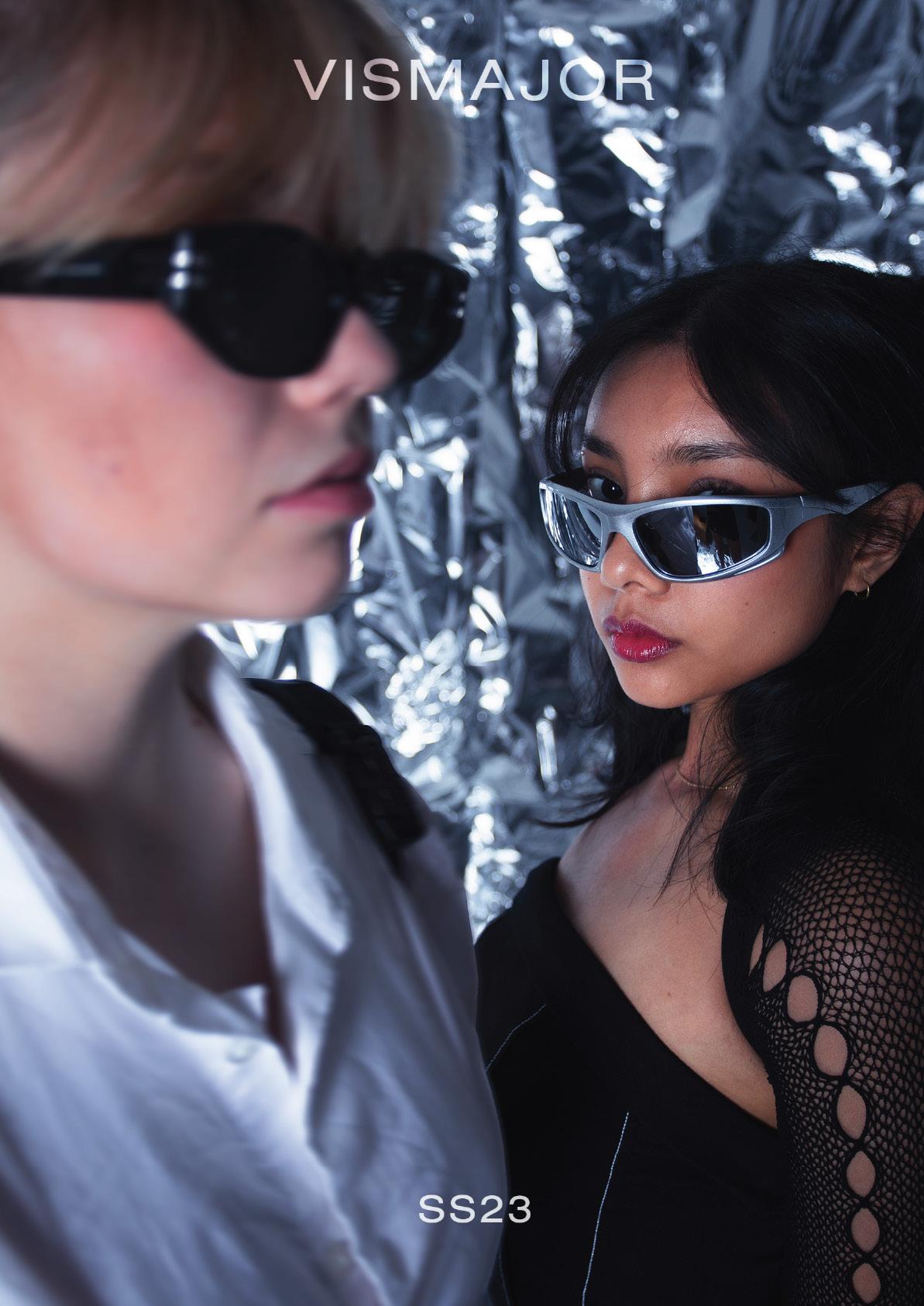
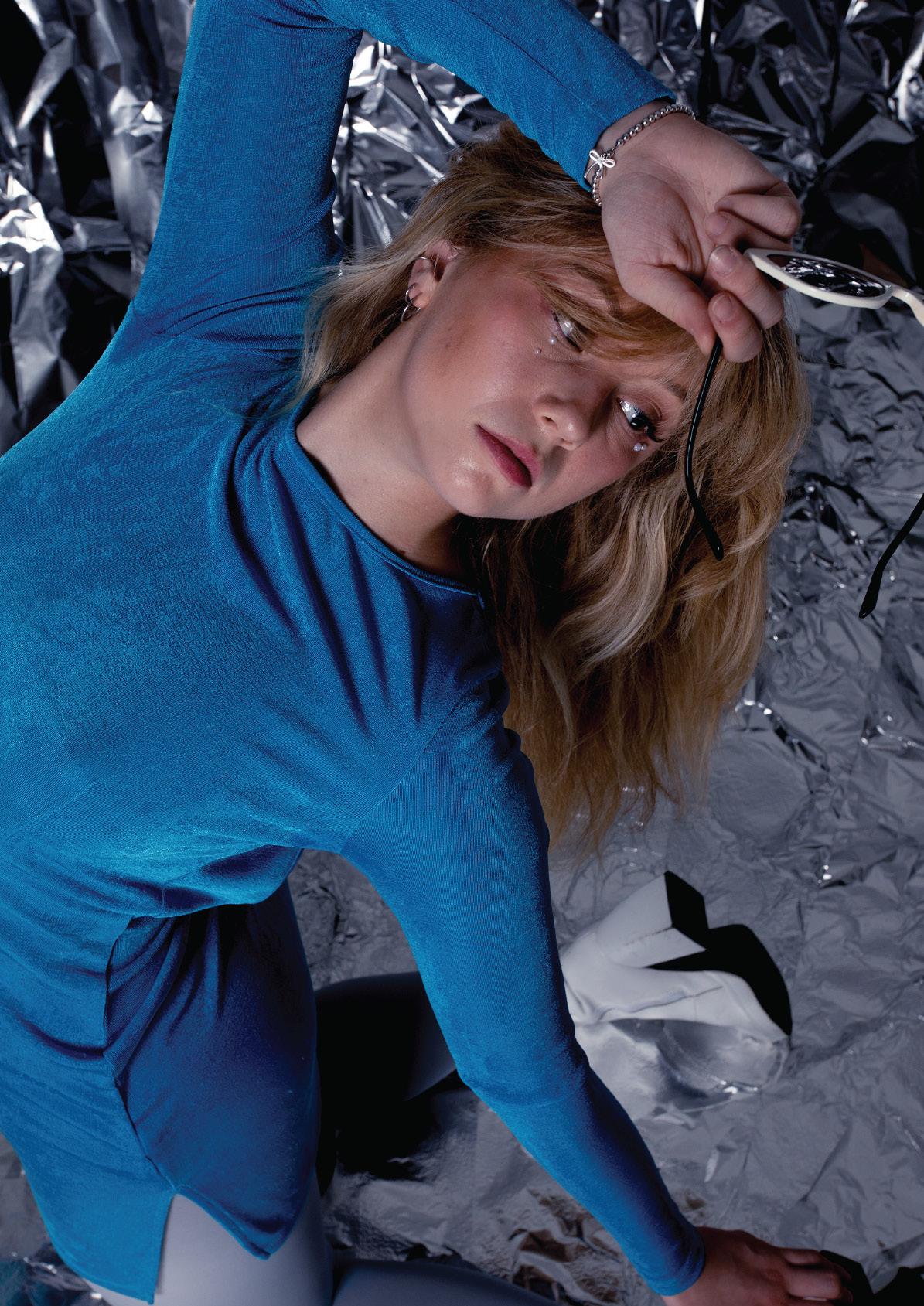
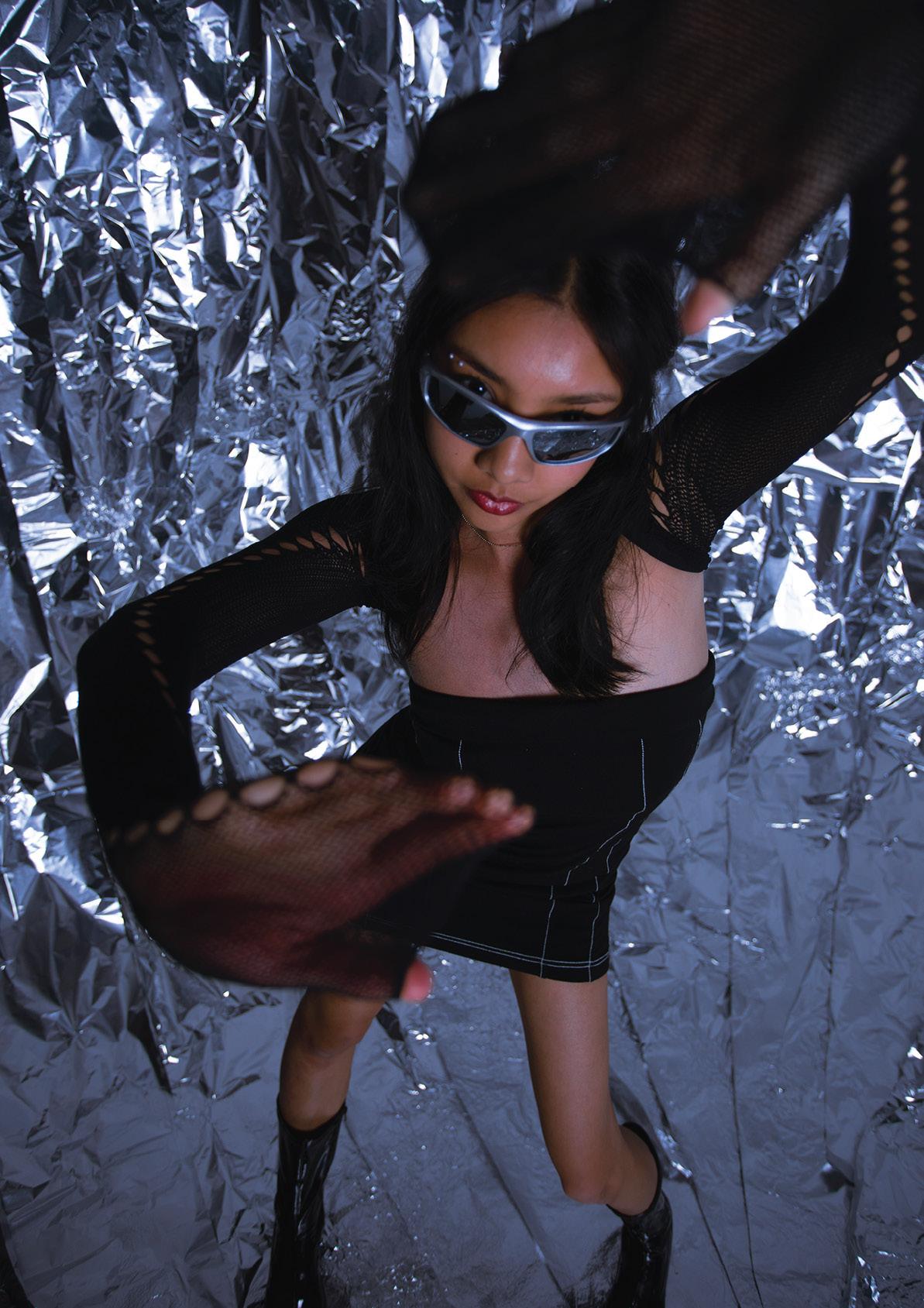




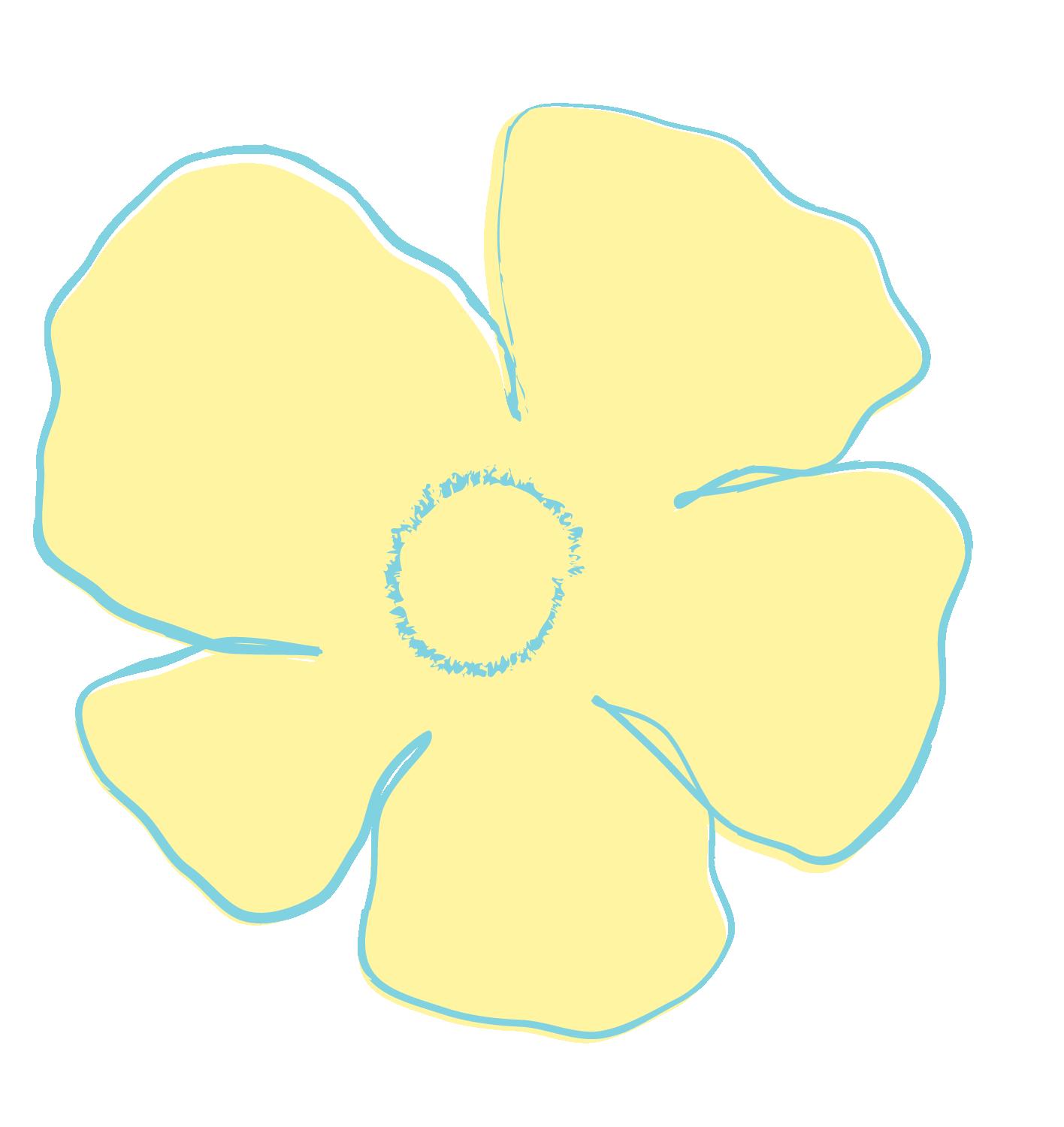
In recent years, the Scandinavian aesthetic has infltrated American media spaces and the fashion world. The Nordic countries – Denmark, Norway, Sweden, Finland, and Iceland –share common histories which translate into the aesthetics we see today. The Scandinavian aesthetic is more than just fashion trends; it encompasses a way of life, fnding harmony between art, interior design, lifestyle, and cultural norms.


The Scandinavian aesthetic emerged in the 1950s, with interior designs featuring sleek lines, modern silhouettes, and a neutral palette. The design style became a hallmark of European modernism, and slowly began to translate into the fashion world. Today, an emphasis on skilled craftsmanship, simple shapes, and clean lines is present across multiple art forms in Scandinavia. Despite Scandinavia being a relatively small region with around 20 million people total, their infuence on design, fashion, and businesses is far reaching around the world. These elements of Scandinavian fashion blend into a beautiful aesthetic young women around the world have been falling in love with. Not only are these brands fashionable, but many of them strongly value sustainability and ethical production.
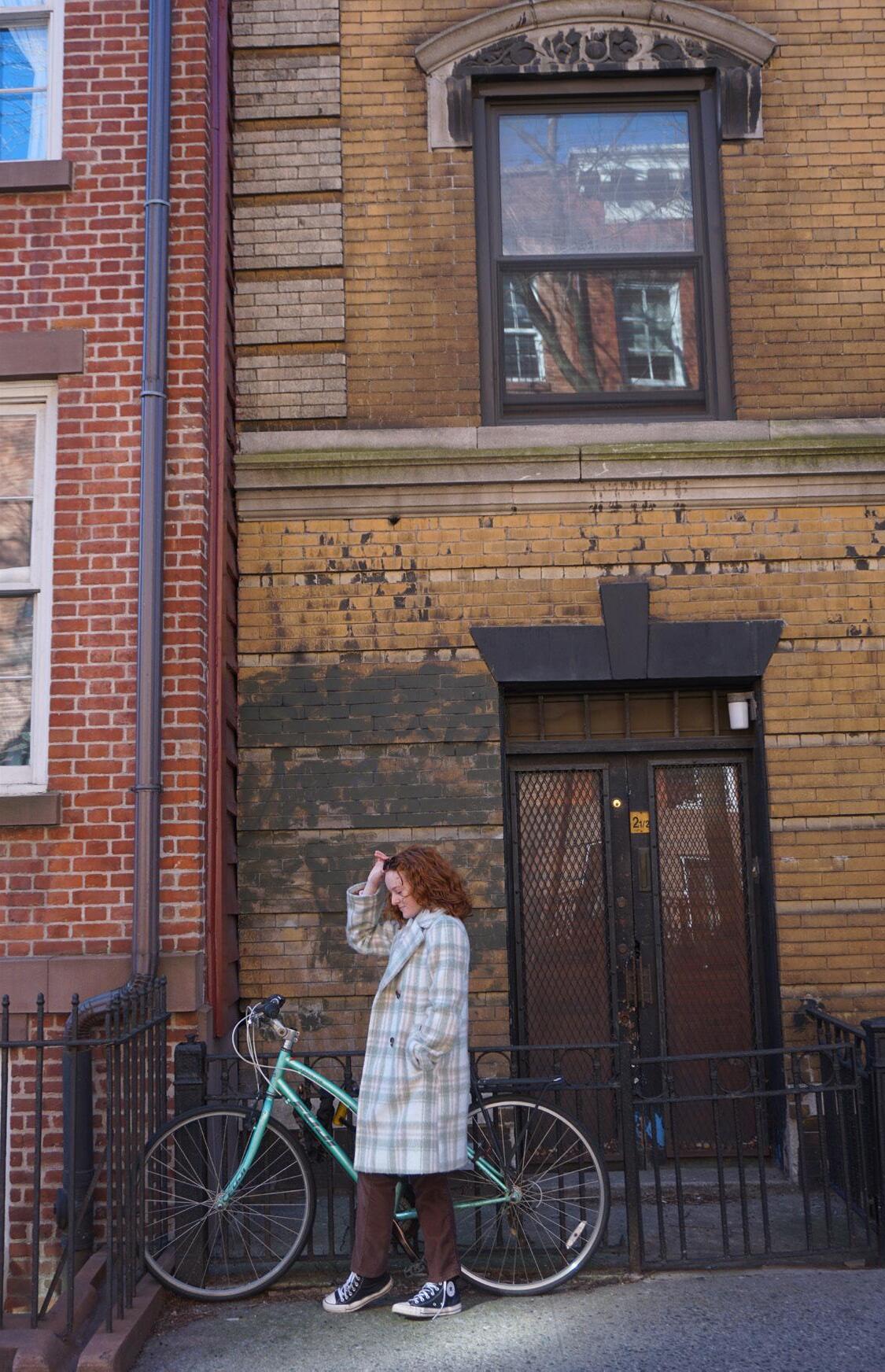
There is also an emphasis on vintage shopping, decreased consumption, and other sustainable purchasing habits.
Scandinavian fashion garnered the attention of millions with the rise of Swedish lifestyle infuencer, Matilda Djerf. With 3 million
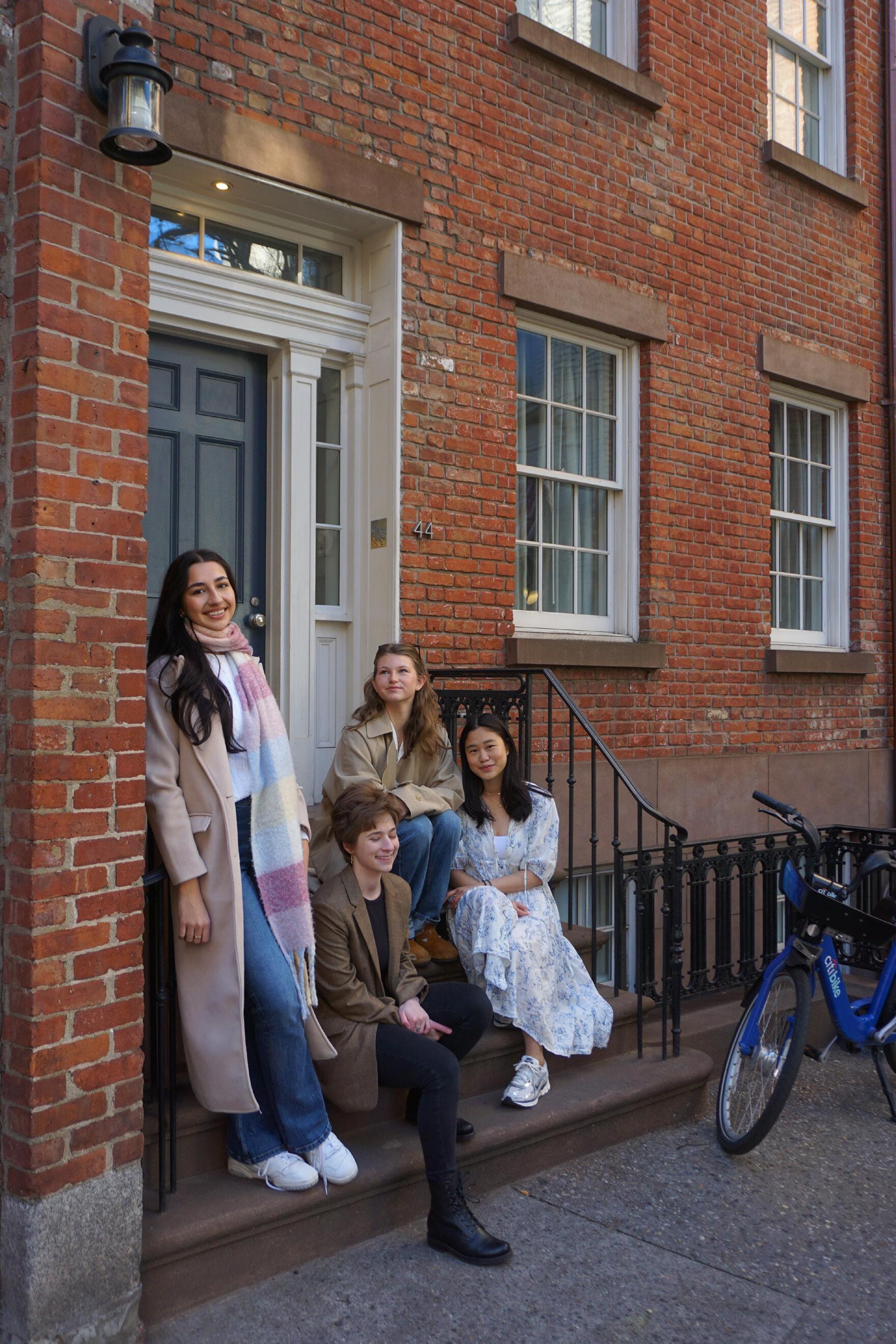
Instagram followers, she’s infuenced the massives with her efortless look, neutral tones, and dreamy lifestyle. She’s now gone on to create her own label, Djerf Avenue, selling clothing, accessories, and homeware. Some of the most popular products feature fowy linen, soft silhouettes, neutral tones, and minimalist prints. Matilda herself models for many of the products, adding to the personalness and attainability of the aesthetic. Additionally, her site features a resale page where previously owned items can be resold at a lower price. This emphasizes Scandinavian viewpoints on sustainability, decreased consumption, and afordability.

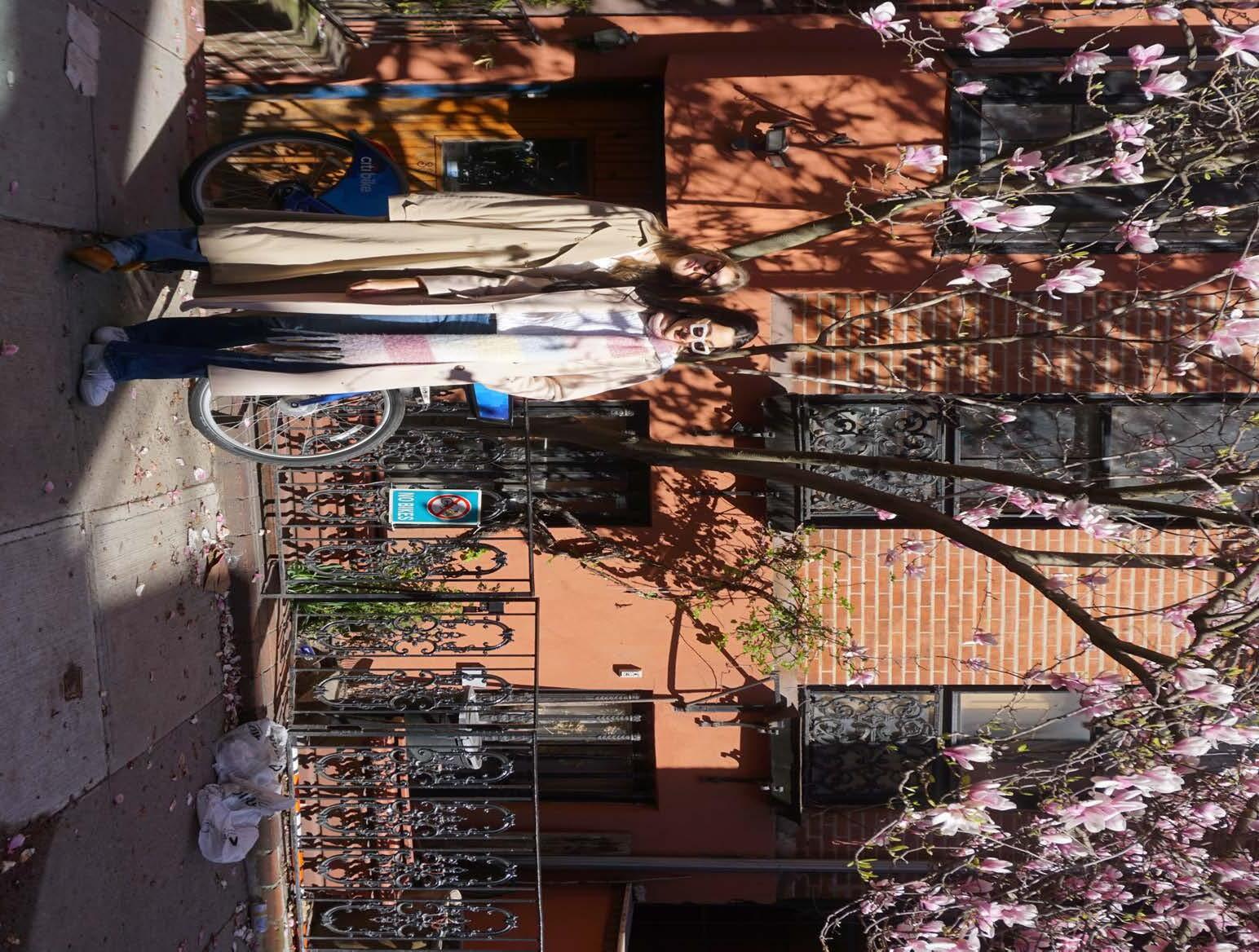
Other Scandinavian brands that have made their way into mainstream American media include Ganni, Acne Studios, Malene Birger, and Cecile Bahnsen. While each brand has their own signature styles, they share a common efortless aesthetic, made for the Scandinavian woman on-the-go who balances personal style with practicality. Some signature pieces include wool coats,

oversized blazers, wide leg trousers, statement sunnies, and winter accessories. Ganni gained international fame with the rise of their “Ganni Girls”, a term capturing the Scandinavian free spirit, promoting self expression through clothing. A Ganni Girl is determined, hardworking, driven. She knows her worth. She’s a go-getter. By attaching these qualities to the Scandinavian aesthetic, Ganni has created a world dedicated to an efortless-
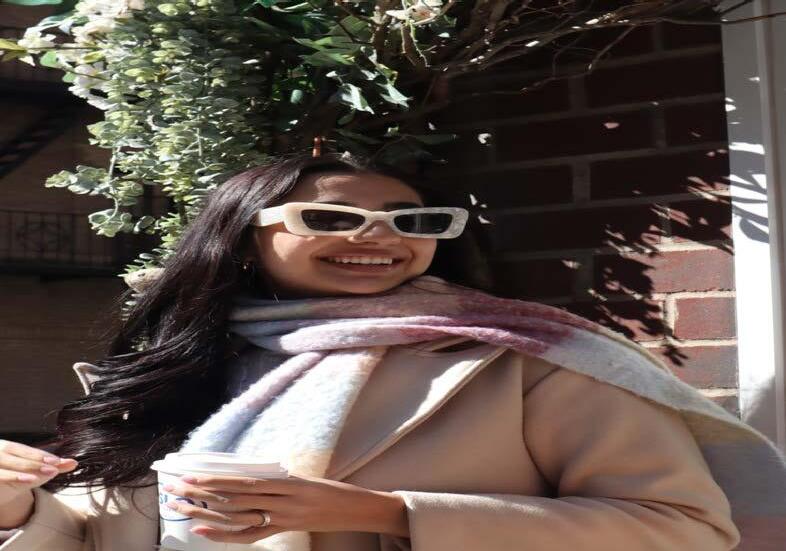
yet-empowering lifestyle for young women everywhere.
Another hallmark of the Scandinavian aesthetic is cycling. Copenhagen is considered the biking capital of the world, and most Danes commute to work by bicycle every day. There are more bikes than cars in most major Scandinavian cities, and it’s a huge part of the lifestyle. This cycling culture leads to an emphasis on practicality and comfort in Scandinavian clothing while still looking stylish. The Scandinavian aesthetic takes a young women from her morning commute to work to an evening at the bar with friends – all whilst cycling.
Whether it’s a beige sweater, a chunky knit, a bold pair of sunglasses, or simply a bicycle, these Scandinavian elements have infltrated American culture, media, and
fashion. The aesthetic has taken the world by storm in recent years, experiencing iterations and intersections with the “Model Of-Duty” and “Clean Girl” looks. Regardless of the clothing, the Scandinavian aesthetic places independent and empowering women at the forefront, with additional

emphasis on sustainability, ethical consumption, and promoting general wellbeing and happiness. A Danish word summarizes the lifestyle perfectly: hygge. Hygge loosely translates to English as a feeling of coziness, comfort, and general content – something we could all use a little bit more of in our lives.
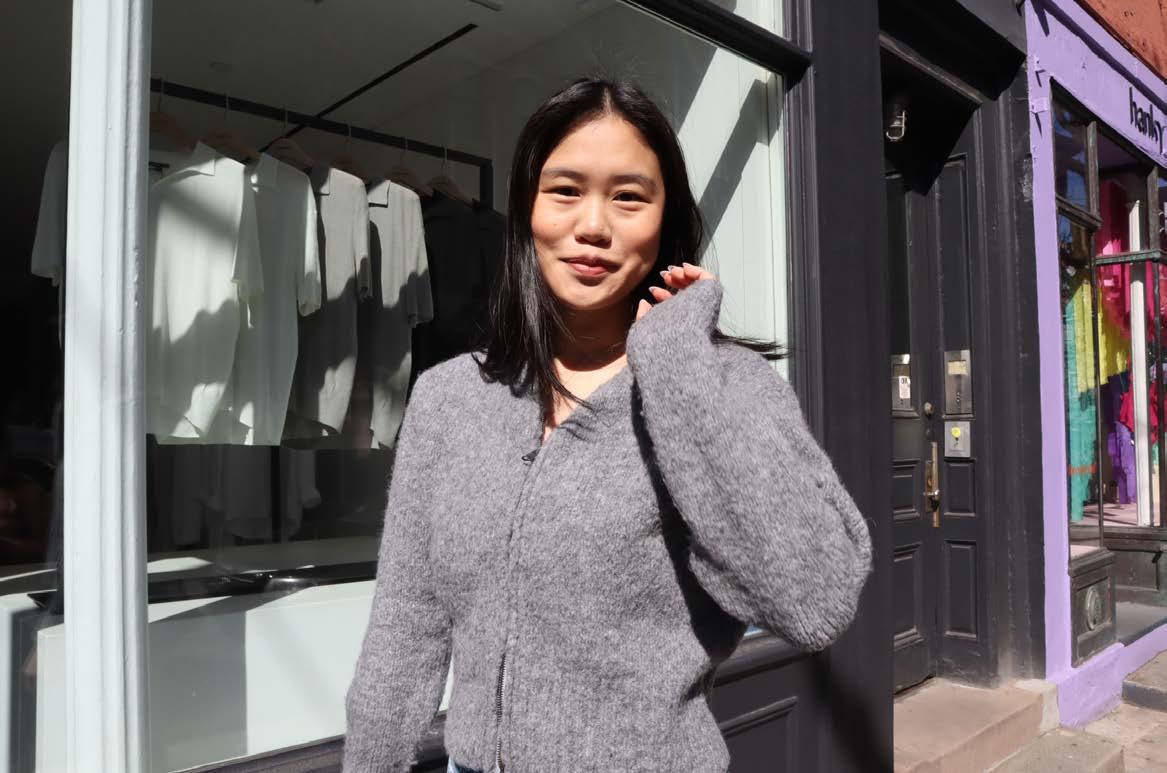



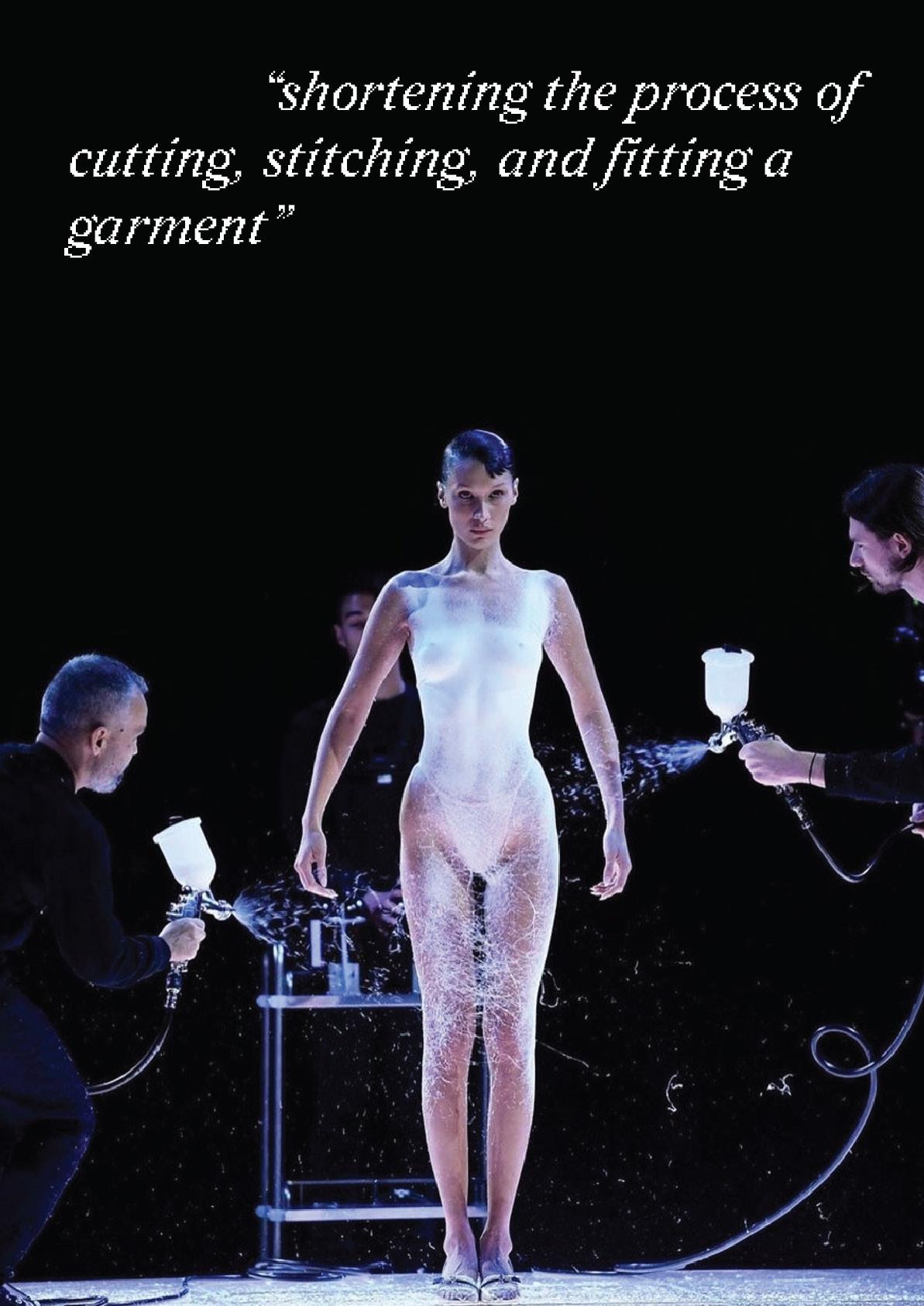
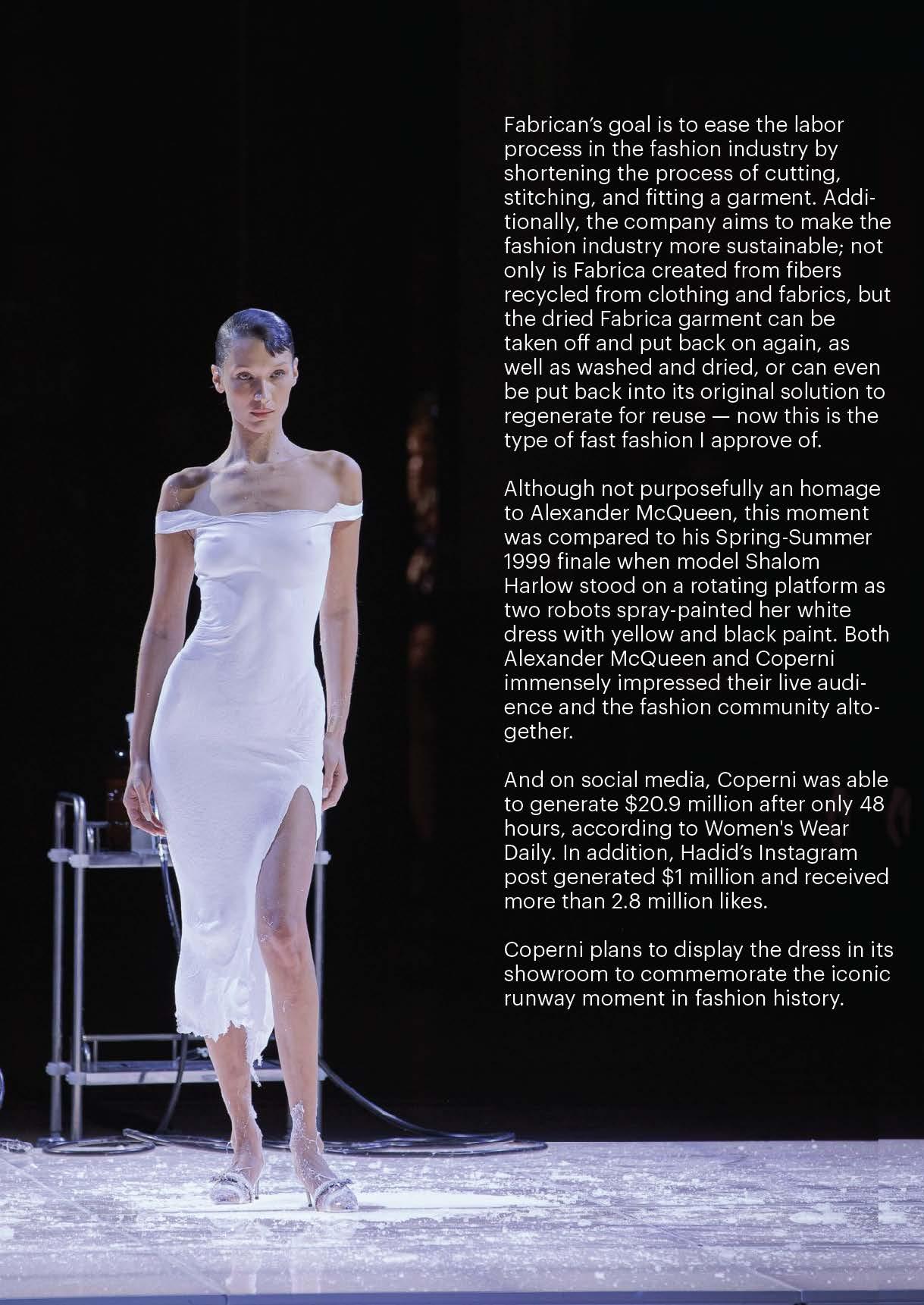
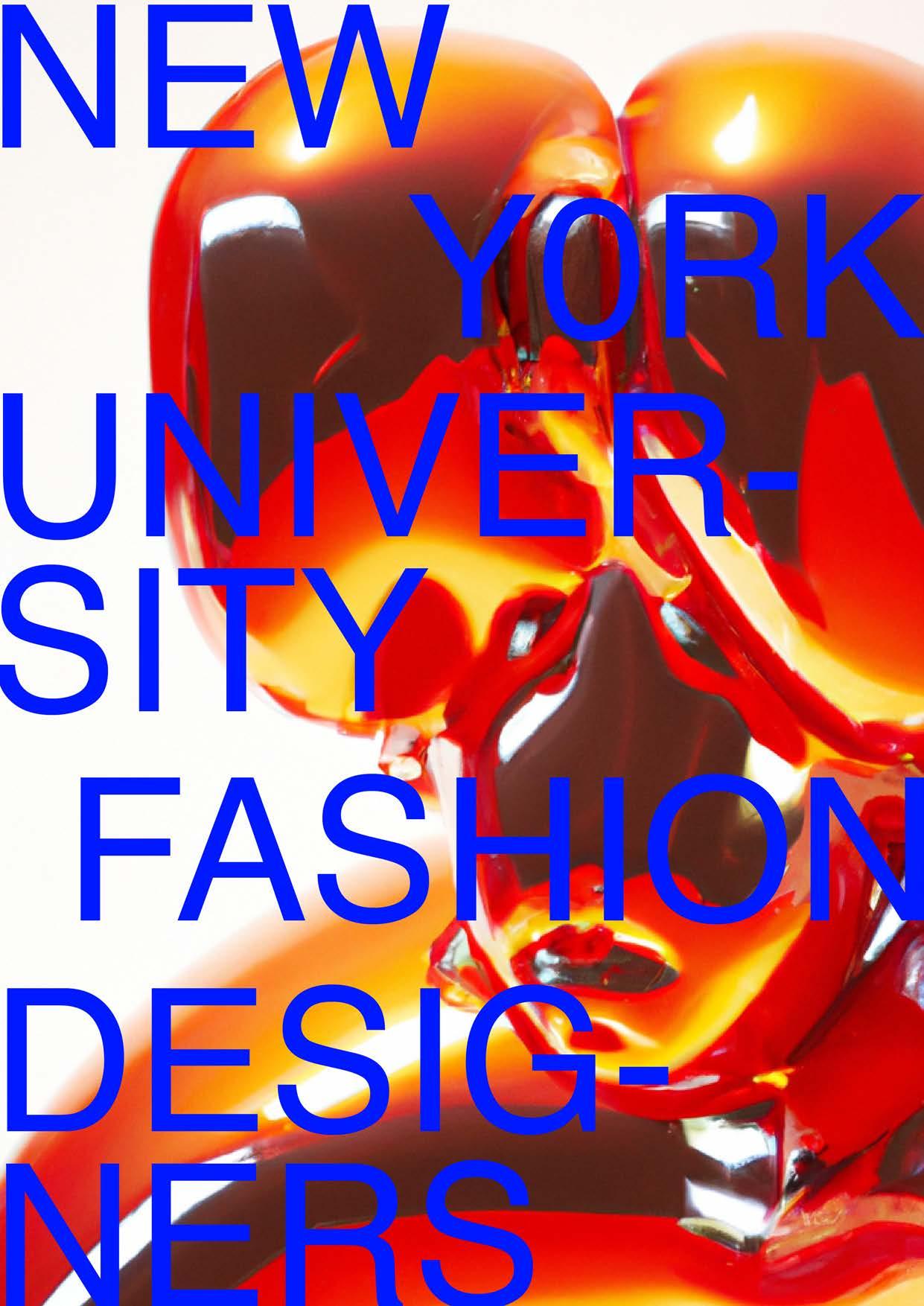
Robinson Brown is a senior studying Fashion & Business at Gallatin, and is a self-taught fashion designer who founded his own eponymous brand, Robinson Brown. Robinson’s designs are a representation of his life through fashion design, and his brand changes with his life experiences. His style is characterized by oversized apparel, especially denim. Robinson has always been interested in fashion and
fnds it fascinating how clothing can alter oneself in diferent situations.
Robinson follows a conventional design approach, beginning with an idea and a mood board. His environment and his curiosity in religion serve as sources of inspiration for his works.
Robinson began producing clothing since he was young, and in 2019, when he moved to New York to attend NYU, he combined his knowledge of what
was trendy with his sewing abilities to produce his debut collection, “High Life,” which was highly successful. In May 2023, Robinsonn’s ffth collection will be released.

What sparked your interest in fashion and what inspired you to start your own brand?
“I’ve always been interested in fashion. I’ve always been interested in the idea of expressing yourself through how you dress. I’ve always found it super fascinating how what you put on can position you in completely diferent places in your life. For example, if you go into a business meeting and wear a suit that’s nicely tailored, it might give you an advantage compared to someone who comes in wearing just a hoodie. This idea of being able to alter yourself through the way you dress is what initially sparked my interest in fashion.”
recent collection, could you explain the creative direction that you went through?
In regards to your most
“My fourth collection was titled “She Loved Red” and the name for the collection stemmed from just experiences, relationships, and life I went through, regarding love and New York City. Obviously we’re very young college students — we’re just fguring out how the world works. This collection is inspired from the perspective of a young person who is in love. My signature and the kind of thing I’ve always focused on is jeans, and I wanted to do a pair of jeans for this collection. For the jeans, the idea for those was it was very focused on one person specifcally. The name I was called when

I frst met this girl was Rookie, and so the name kind of just ran from there. I collaborated with one of my friends, who’s an artist, on the front of the jeans for the skeleton painting.”
What advice would you give to aspiring fashion designers, particularly those studying at NYU or other universities?
What skills and traits do you think are essential for success in this competitive industry?
“To succeed in fashion at NYU, you need an entrepreneurial spirit. NYU lacks a fashion program, and it’s important to have the drive to sell your clothes to students, as that’s the only way to make an impact… In


a class last fall, I found a group of students pursuing fashion. It wasn’t necessarily design; it was just people who wanted to be involved in the industry. There aren’t many people doing this at NYU, so you have to bring in others yourself… To succeed in fashion at NYU, it’s essential to use resources adjacent to fashion, like graphic design or business. NYU is a business-oriented school, so it’s an excellent place to develop those skills.”
Can you tell us about your design process?
How do you typically start a new collection or piece, and how do you bring your ideas to life?
“My design process, I would say, is very
traditional. I start with an idea, and then I move on to the mood board process. I ask myself, ‘How am I going to turn this idea into a reality?’ From there, I turn my idea into reality through my craft, which is sewing and creating clothes. I’m inspired by what’s around me and life in general. Walking around in New York and seeing the diferent outfts that people wear is inspiring to me. I’m also inspired by religion, by the idea that people can come together as a mass and believe in one idea and further that idea over centuries and generations. The way that religion is positioned in society, with elaborate dress, such as cloaks, fascinates me. This is just part of who I am as
a creative, and I try to tie in the idea of religious imagery. Not necessarily any specifc religion, but just everything. That’s part of my design process, trying to take inspiration from daily life, such as what I can fnd in New York.”
Like many others, Rund Mohammed, owner of ‘by rund’, started her business while stuck at home during quarantine. Characterized by bold colors and their fuzzy exteriors, by rund’s tote bags are all designed and handmade by Rund herself. As a student of global liberal studies at NYU, the designer started her brand as a way to keep busy and explore her passions during a trying time. Entirely self-taught, Rund’s brand stands apart
from others because of the passion she has for what she creates. Describing her business as “a tiny little shop on Depop,” Rund views by rund as a platform to expand and share her hobbies with fellow fashion lovers.

While running her business, Rund was able to discover her love for the design process. Being able to direct photoshoots, design collections and interact with customers gave her the outlet to break out of her shell. Selfdescribed as relatively shy and introverted, Rund says the most inspiring part of the process is being able to see customers wear
and enjoy her designs. She says “Seeing my bags come alive and come to full completion at the end of the sewing process is always the best feeling ever!”
Rund considers herself an untraditional business owner as she lacks a conventional background in business and design. However, she accommodates for this lack of experience in the time and dedication that she pours into by rund. Even between a heavy school load and a part time job, she manages to dedicate a large portion of her time hand making each order that she gets, ensuring that each customer receives a high quality product. When describing her experience with customer satisfaction

Rund says, “I’ve never really had any negative experiences with someone not liking a bag or a bag being faulty, but as a brand owner that’s obviously one of our biggest fears. My bags are handmade at the end of the day, so I need to put a lot of work and focus into making sure they’re top-notch!”
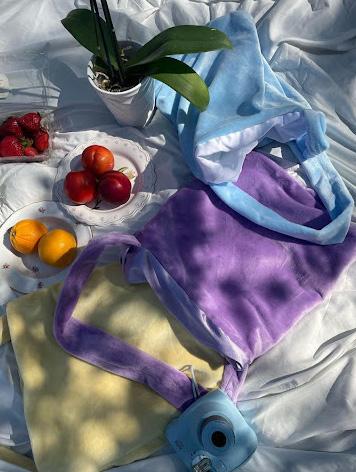
In the future, Rund hopes to expand her brand to include a larger range of products. While the brand will still continue to carry its signature tote bags, by rund may soon carry new lines of skirts and tops made in a diverse range of materials. When it comes to growth the designer says “...even though I’d love for my brand to be more well known in the future, I’m also not upset about where it’s at right
now. I think it makes the interactions I have with my customers and people who engage with my platform even more personal and real.”
“Fashion is Individual, Powerful, Comfortable, Expressive, Long Gravity, and Questions Norms.”
- Fran JanalFran is concentrating in Crafting Career Futures at Gallatin. Their collection called Touch It illustrated their defnition of fashion at Renewal: The Gallatin Fashion Show. Touch It represents their techniques and
philosophies, and it connects the material with the humans by making them want to touch the pieces — like the texture of the crochet, the design of the voluminous shirt, and the spiky accessories. Fran used various techniques such as crochet and 3D printing to create the looks.
look from the Touch It collection at the Gallatin Fashion Show (©Myaskovsky: Courtesy of NYU Photo Bureau)

look from the Touch It collection at the Gallatin Fashion Show (©Myaskovsky: Courtesy of NYU Photo Bureau)

look from the Touch It collection at the Gallatin Fashion Show (©Myaskovsky: Courtesy of NYU Photo Bureau)
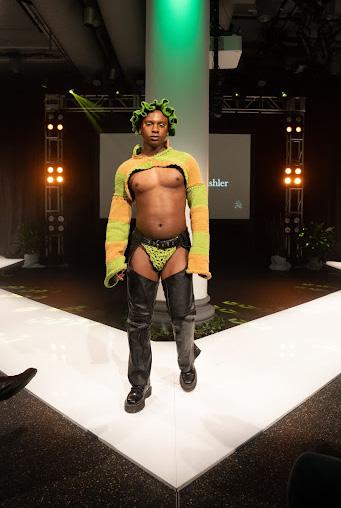
look from the Touch It collection at the Gallatin Fashion Show (photographed by Anna Letson)
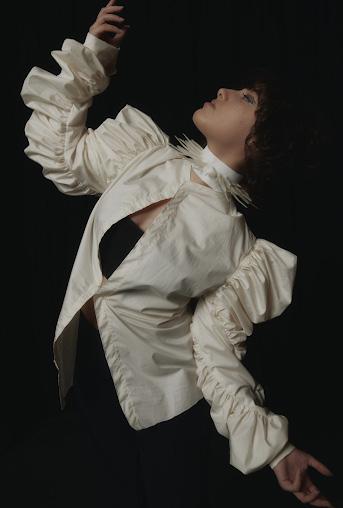
Riya Chaturvedi, a Fashion, Business, Media Studies, and Art History student at Gallatin, is the founder of the brand Riyamagine. Her upcoming collection is focused on transforming traditional menswear tailoring into contemporary womenswear. Riya has been designing since she was a little child, and Ms. DeVane, her frst art instructor, as well as her fashionable parents have been key inspirations.
She appreciates learning about the industry from all perspectives, even if her degree concentrates on the media and commercial side of the fashion industry. Depending on the topic, Riya’s design process varies, but she is frequently infuenced by details from the 1960s and the Baroque era.
Can you tell us about your design process?
How do you typically start a new collection or piece, and how do you bring your ideas to life?
“My process is honestly all over the place. It depends on the project. If it’s more ofcial, you will start out with the designs. But the majority of the time, I am always inspired by the materials I work with. I can never actually know what a garment is going
to look like until I have the fabric in my hands. For this recent collection, working with ties was extremely complicated. But, every design idea I had previously was thrown out when I got them and started to drape them in the fgure.”

Where do you draw inspiration for your designs? Are there any particular artists, designers, or cultural movements that infuence your work?
“I have a very wide range of interests in diferent styles but I am mostly inspired by the old. I love the 60s and design elements from that time always show up in my work. I am also fascinated with fashion from the
Baroque era. Majority of my designs will be pushing one extreme of attempting to blend ultra masculine or feminine elements. Something like Rococo inspired fashion would be super feminine with lace rufes and silk whereas 60s menswear could be about tailoring. In my latest collection I attempted to blend masculine and feminine elements through reimagining the suit and tie in the context of the female fgure.”
Tell me about your greatest achievement as a fashion designer.

“My greatest achievement would have to be this latest collection I designed for the Gallatin Fashion Show. I was able to take some of my dads old suits and ties and transform
them into designs. It was an amazing moment for me to see his old things I saw him wearing growingup given a new life.”
Can you describe what lessons you learned during your time as a fashion designer?
“Don’t rely on expectations. The most important process of

design is knowing to trust the process. Every time I have messed something up, which is often, it leads me to rethink what my creations can be. They always end up better.”Ellie Cozy and Riya Chaturvedi (right) after the Gallatin Fashion Show
At Gallatin, Anthony is concentrating in The Techniques in Fashion Design, Aesthetics, and Business Administration. He says, “I want to investigate the skills and practices used in fashion design and how that correlates to aesthetics in terms of fashion as an extension of art, and how to run a business which sums up into having a successful fashion company.”
Anthony’s brand is called Heaven Concealed. He is the founder, designer, and creative director of the brand currently. Heaven is meant to represent systems of authority or expectations in fashion or society and Concealed is meant to represent what fashion could look like if we embraced freedom in fashion. He wants his brand to embody what fashion can look like without the watching eye.

At Renewal: The Gallatin Fashion Show, Anthony debuted his frst collection for Heaven Concealed. The collection was called Esoteric, consisting of nine unisex looks with a color palette of red, white, gold, silver, and bronze. Esoteric was designed “to magnify the aspect of fashion where people use clothing to express themselves and how this form of expression can manifest in a way that is costumey or exaggerated.” His goal with this collection was to inspire people to dress however they feel on occasion rather than only dress functionally. In conjunction with the show’s theme renewal, Esoteric represents how we can change fashion to resemble the future of fashion — a future of fashion if there wasn’t so
Heaven Concealed will be releasing collections seasonally from now on. Currently, they aren’t selling, but soon they will be selling one-of-a-

much an emphasis on conformity and more of an emphasis on being unique.
kind pieces. Anthony’s future goal for the brand is to make made-to-wear and bespoke fashion. He says, “I want to make clothes that I want to wear. I want to make clothes that I don’t see. I want to provide the statement pieces that people want in their wardrobe, moreso high-end. It’s going to exist in the realm of luxury but incorporate streetwear elements.” Some of his inspiration comes from Virgil Abloh for Of-White and Kim Jones for Dior menswear; their clothing can be worn in everyday attire, but they also have the same quality and cut of a luxury garment.

which inspire him to create his own ideas. Then when he’s sketching, he looks into his document where he keeps these inspiration pictures and he conceptualizes an outft. After that, he sources textiles and he starts sewing the designs. “During Covid-19, one of my teachers gave me tips on fashion design. Something she said that
In terms of his creative process, Anthony says that he typically starts by screenshotting things that he likes on social media
I constantly think about is ‘designers have to have patience.’ It’s a passion of love, but it’s very hard work, and sometimes you need to take breaks and then approach it from a diferent angle. You just need to maintain optimism and trust the process,” Anthony says.
“When you’re making something – to get philosophical – it’s such a crazy experience because it’s a bunch of stuf that you’re turning into other stuf. So it’s easy to doubt that the vision won’t come to life, but when it does, it’s surreal. Watching my brand and collection debut at the Gallatin Fashion Show was like ‘wow.’ ”
Carmen, who showed of her collection called Renewal of Innocence at Renewal: The Gallatin Fashion Show, is studying at Gallatin, concentrating in Fashion Environmental Science and Business and minoring in Creative Writing. She started
fashion design in 2021, her junior year in high school. Her design process starts with contrasting ideas, forming silhouettes, and focusing on how to entangle them together.
“Fashion is the intention, the artistic, and the creativity behind it.”
- Carmen LopezFernandez
Carmen made her ofcial frst step in fashion at the Gallatin Fashion Show, showcasing her frst collection called the Renewal of Innocence. All of her pieces showcase pureness and loveliness. The shirring, complex, industrial ribbon and lace used in the collection express a dreamy sensibility and clarity. Also, the dark leather she conveys her message in two contrasting relationships, expressing maturity and growth as opposed to pureness and innocence.
She said that fashion can be a lot of disappointment. Rather than accepting all parts of the criticism, she says she listens to those that help her to grow further as a stepping stone to be

more creative. However, the most important part to remember is to “Trust your instinct and keep creating things,” she says.
“Amor Mio” from the Renewal of Innocence collection at the Gallatin Fashion Show, modeled by Taylor Fuchs (©Myaskovsky: Courtesy of NYU Photo Bureau)

“Princesa” from the Renewal of Innocence collection at the Gallatin Fashion Show, modeled Sami Bates (©Myaskovsky: Courtesy of NYU Photo Bureau)

“La Niña” from the Renewal of Innocence collection at the Gallatin Fashion Show, modeled by Christine Marabella (©Myaskovsky: Courtesy of NYU Photo Bureau)

“Carmencita” from the Renewal of Innocence collection at the Gallatin Fashion Show, modeled by Mamaati Mulahi (©Myaskovsky: Courtesy of NYU Photo Bureau)

sketches for the Renewal of Innocence collection by Carmen Lopez-Fernandez


Cyberpunk developed as a subgenre of science fction around the 1960s as it refected the time’s concerns for humanity’s fate as technology became more complex and powerful. The 20th century was a time of worldwide political instability that inspired artistic–primarily literary–explorations of possible dystopian futures of society. The imagination and visualization of these dystopias varied by era, infuenced by the unique challenges each faced. For example, authoritarian regimes in the early 20th century refected the fear of technology stripping humans of their autonomy. The second half of the 20th century saw a growth in right-wing politics that supported a free market and worsening economic disparities—this time also led to rapid technological innovations, with a special emphasis on communication technology like the computer and the internet. The increased possibilities of obtaining information from people created a fear of surveillance, control, and technology becoming impossibly intertwined with humanity. With a foundation in cybernetics and punk culture, Cyberpunk inherited punk ideologies of nonconformity and self-consciousness utilized to explore these fears by imagining how people and machines interact in a post-capitalistic, hyper-technological future.

Cyberpunk is best known for its visual aesthetic that has been developed across different visual media such as flm, television, anime, and video games. The genre’s iconic visuals are dominated by neon lights, pervasive technology, and large-scale buildings that juxtapose the chaotic streets of the future. In these settings, the body and fashion become a tool that extends the immersive experience of Cyberpunk by revealing the personal manifestations of the social context of its characters and environment. Clothing allows characters to display their social marginalization as well as their increasing proximity to technology and body modifcations.
Cyberpunk fashion is not uniform across media, evolving and adapting to the period of creation and worldbuilding of the piece of which it is part. However, it generally combines nostalgia and the conception of future innovations in clothing. It is also infuenced by military attire, showing a juxtaposition between eccentricity and utilitarian fashion. Popular pieces include military boots, knee pads, bodysuits, leather jackets, long coats, body armor, light-up suits, and robotic augmentations. At the more futuristic end of the spectrum is the costume design of Tron (1982) by Elois
Jenssen and Rosanna Norton. The movie follows the crossover into a computer system for which Jenssen and Norton created skin-tight suits with vests and protective gear that lit up in neon colors that represented the physical form of computer programs. The costume design of the video game Cyberpunk 2077 focused on the aspect of gear, body augmentations, and the utilitarian fashion that is more commonly associated with Cyberpunk. Amongst the designers that have been infuenced or directly worked on Cyberpunk fashion is French designer, Jean Paul Gaultier. As the costume designer of the flm “The Fifth Element,” Gaultier

created a futuristic aesthetic that leaned toward the unconventional and challenged social norms, infuenced by punk, high-end, and utilitarian fashion. Gaultier’s The Fifth Element’s 23rd-century looks became immediate icons within the genre as well as the fashion industry as a whole. These include the humanoid Leeloo’s white bandage dress and orange hair and Ruby Rhod’s leopard catsuit. Prior to the release of the flm, Gaultier released his Fall/Winter 1995 “Cyber” collection. The collection adopted an apocalyptic, dystopian look that resembled the trilogy Mad Max’s
industrial aesthetic while portraying the importance of technology. The most recognizable looks were dotpatterned jumpsuits with the outline of bodies wearing that resembled an electronic circuit.
Clothing and fashion refect the individual and collective responses to economic, political, and ideological changes in society. These changes not only infuence the consumer choices of individuals but also the creative process of designers who shape the way trends develop and change. By employing the rebellious affordance of punk, Cyberpunk defes social codes and barriers by combining pieces and materials popular in punk fashion and technological elements.











COVER
Qiqi Zhou
Scandi Look
Ryane Thorne
Shoshanna Reichmann
LeAnn Mai
Isabella MacClemmy
Scarlett Tapiero
Alisha Dhir
Coperni Creates Fashion History
Norah Comtois
Qiqi Zhou
NYU Fashion Designers
Norah Comtois
Valerie Rodriques-Castro
Justine Ha
Michelle Lin
Ashley Cho
Alisha Dhir
Cyberpunk
Bonny Chavarria
Sophia Webster
Naomi Rosenfeld
Reagan Radwanski
Elizabeth Baltusnik
Mighty Rad
Radhika Mashru
Qiqi Zhou
Flash Photo Club Series
Zoe Morris
Arshi Kaur
Ameenah Leigh
Ari Arvand
Creative Director: Alisha Dhir
Editor in Chief: Radhika Mashru